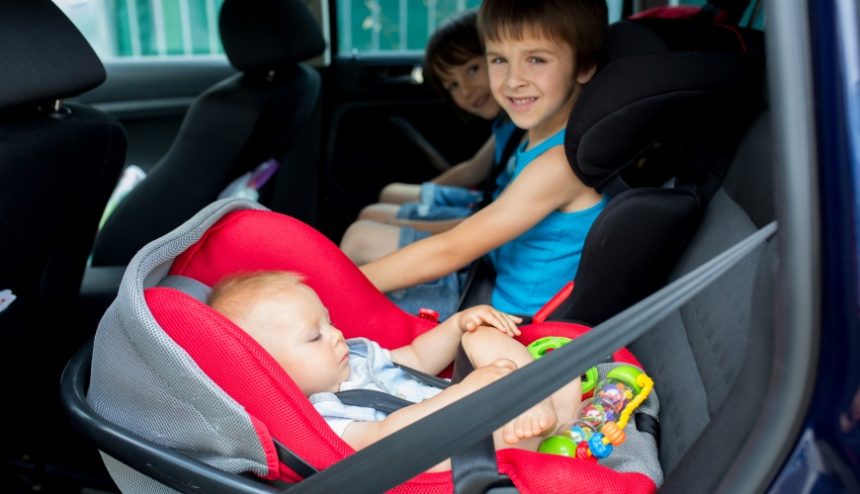Whether you drive a soccer-mom mini-van, a car, truck, or SUV, make sure your kiddos are safe on the road. Their age, weight, height, and developmental level need to be considered when choosing the kind of child safety restraints (car seat) they need or even when they are ready to move to the front seat.
Car Seat Safety by the Numbers:
- 1962: First car seat was made available.
- 1971: The National Highway Traffic Safety Administration (NHTSA) developed federal standards for car seats. 2021 is their 50th anniversary!
- 1,500 children per day ride unbuckled into a car seat.
- Around 50% of all child safety seats are improperly installed.
- Approximately 90% of car seats are used incorrectly.
Forward or back?
The American Academy of Pediatrics and the NHTSA both recommend that it’s safest when children stay in back-seat, rear-facing car seats as long as possible. When car seats are installed and used correctly they reduce fatal injuries from crashes—by more than 70% when buckled in convertible/infant car seats and more than 50% in booster seats.
Ages and Stages
If your child’s car seat is the same one they’ve been using for years, don’t assume it is still a good fit for them. Follow the manufacturer’s guidelines for age, height/weight, and your child’s specific developmental needs. NHTSA has a handy car seat finder tool to help you find the best fit. (Children with special needs may require special seats. Discuss this with your doctor.)
These are the general guidelines:
- Rear-facing until your child reaches top height/weight limit as listed in the instructions from your car seat’s manufacturer
- Forward-facing with harness and tether until your child reaches top height/weight limit as listed in the instructions from your car seat’s manufacturer
- Booster seats until at least age eight or child is about 4’9″
- Seat belts and back seat until 13 years
Safety Tips
Never purchase a used car seat—if it had been in an accident it would no longer offer adequate protection and it may have even been recalled. Register your car seat after purchasing it so you can be notified in case of a recall.
In the winter months, warm up the car so you can remove your child’s bulky winter coat before buckling him into the car seat. When car seat straps are buckled over layers of heavy clothing, they don’t fit properly.
To mat or not to mat?
What do you do about the mess your child leaves strewn around the seat—from Cheerios to cracker crumbs and some things you can’t even identify? Don’t purchase a seat protector mat, car seat cover, or any third-party accessory without checking with your car seat manufacturer. According to Consumer Reports, “aftermarket products are not approved for use with child car seats.” So although it might help keep your car tidy, call your car seat manufacturer or check their website for FAQs about third-party products—or purchase one made by your car seat’s manufacturer because it has been tested and approved for use with your car seat.
Find a car seat safety check near you to make sure your child car seats are correctly installed for your vehicle’s safety features and that the kids are buckled in correctly.


